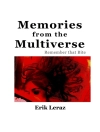Things are disappearing. Parts of buildings, parts of people, parts of the whole world—they’re here today, gone tomorrow. Old Shellback—a character as crazy-smart as Christopher Lloyd in Back to the Future—thinks he needs glasses. But all he really has to do is open his eyes …and see the light.
Or so says George Smiley—otherwise known as the Messiah. George claims that the reason things are vanishing is because he wants them to go away. He has no more use for the world … and so it goes. Say goodbye. But Old Shellback has a different idea, and since he is the most stubborn man in the universe, you might want to hear him out.
What’s Shellback’s idea? That two can play at this game. While George is making this world disappear, Old Shellback will make another one appear. Join him on an amazing odyssey—as he heads back to a future of his own making.
By the spring of 1938, Hubbard’s stature as a writer was well established. As author and critic Robert Silverberg puts it: he had become a “master of the art of narrative.” Hubbard’s editors urged him to apply his gift for succinct characterization, original plot, deft pacing and imaginative action to a genre that was new, and essentially foreign, to him—science fiction and fantasy. The rest is Sci-Fi history.
Also includes the Science Fiction adventures “A Can of Vacuum, ” in which a practical joke on a space station proves that a good sense of humor is timeless, and “240, 000 Miles Straight Up, ” the thrilling story of a race to the moon … and the one man who may be able to save the earth from Armageddon.
Circa l’autore
With 19 New York Times bestsellers and more than 350 million copies of his works in circulation, L. Ron Hubbard is among the most acclaimed and widely read authors of our time. As a leading light of American Pulp Fiction through the 1930s and ’40s, he is further among the most influential authors of the modern age. Indeed, from Ray Bradbury to Stephen King, there is scarcely a master of imaginative tales who has not paid tribute to L. Ron Hubbard.












